Abstract
The prospect of patient-oriented prescription drug labeling has focused increased attention on the effectiveness of written information for the consumer. Studies which have evaluated the effects of written prescription drug information in a patient population are reviewed. Several studies indicate that written information can be effective in improving patient compliance with regimens for antibiotic therapy. However, for drugs used on a long-term basis, written information as a sole intervention has not been shown to be sufficient for improving patient compliance. Patient knowledge of less commonly known information, such as precautions, side effects, or special directions is frequently improved by written information. Listing a drug's side effects has not been shown to increase the reported experience of side effects; however, one study suggests that patients may be more willing to report side effects to a health professional if they are listed in the written information. The trend for recent studies has been to focus on the "milieu" in which written information is provided or to systematically vary structural features of the information in order to improve the quality of drug communications.
Full text
PDF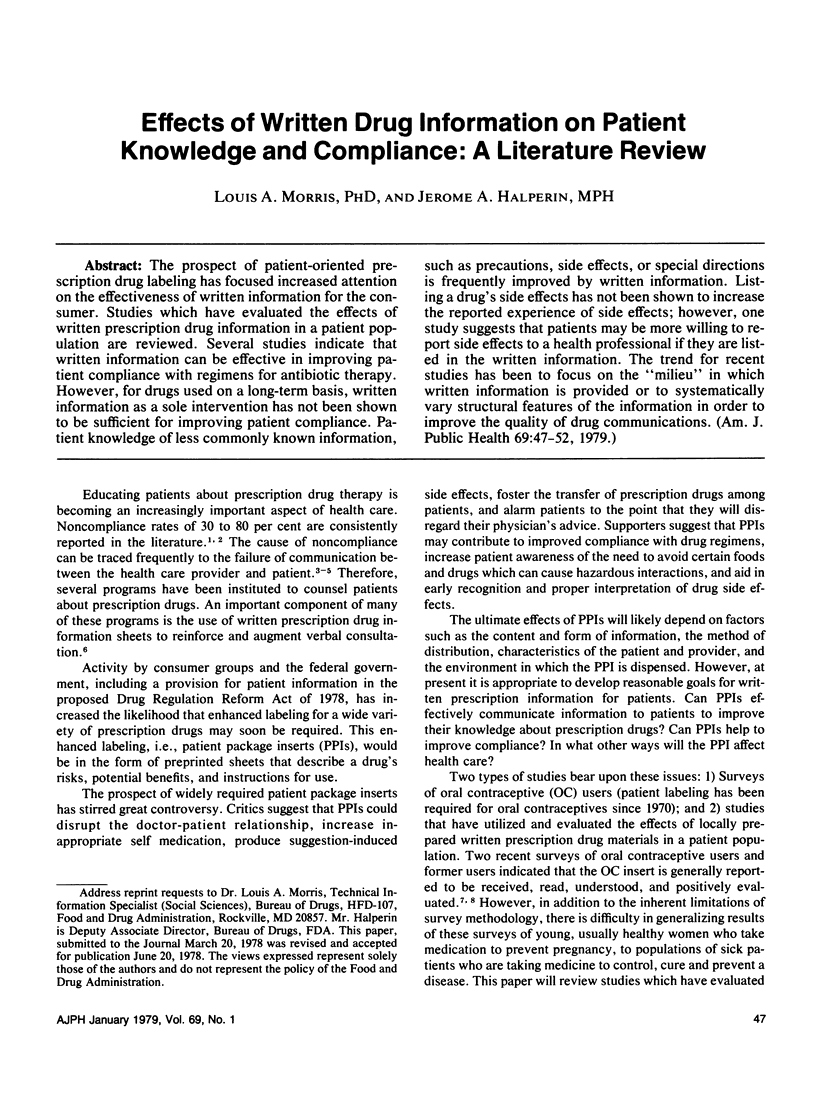
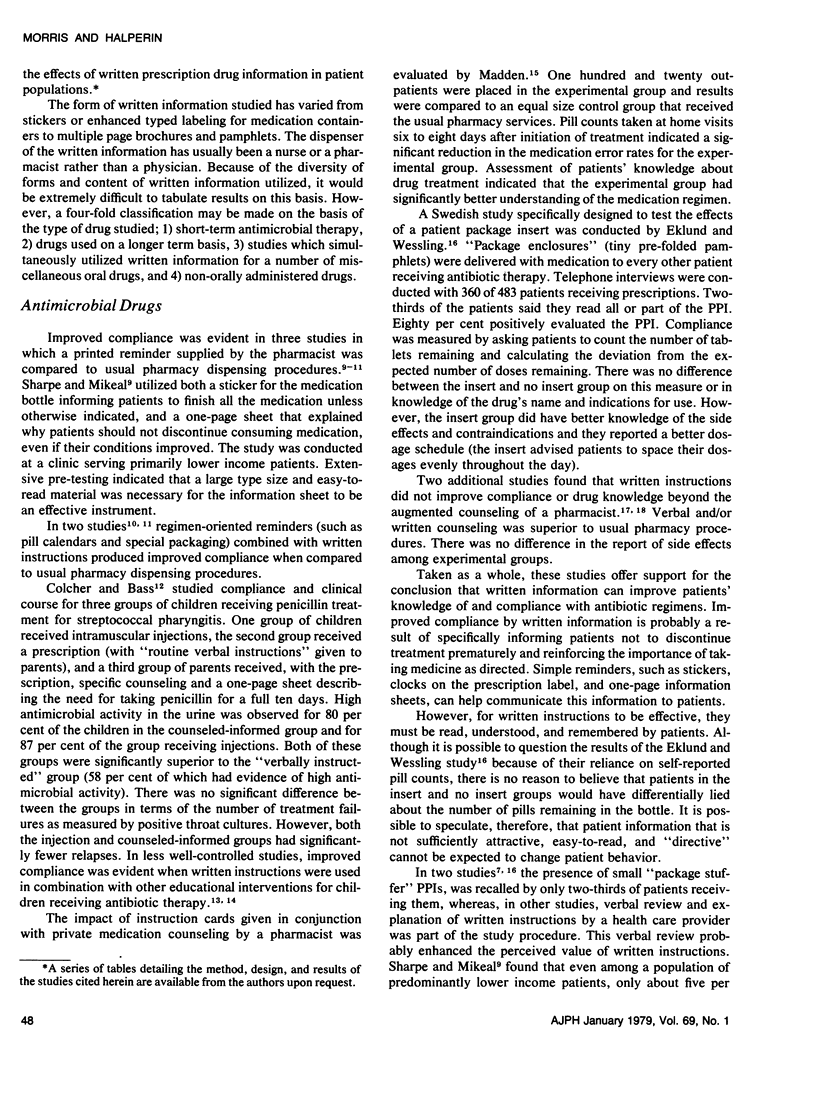
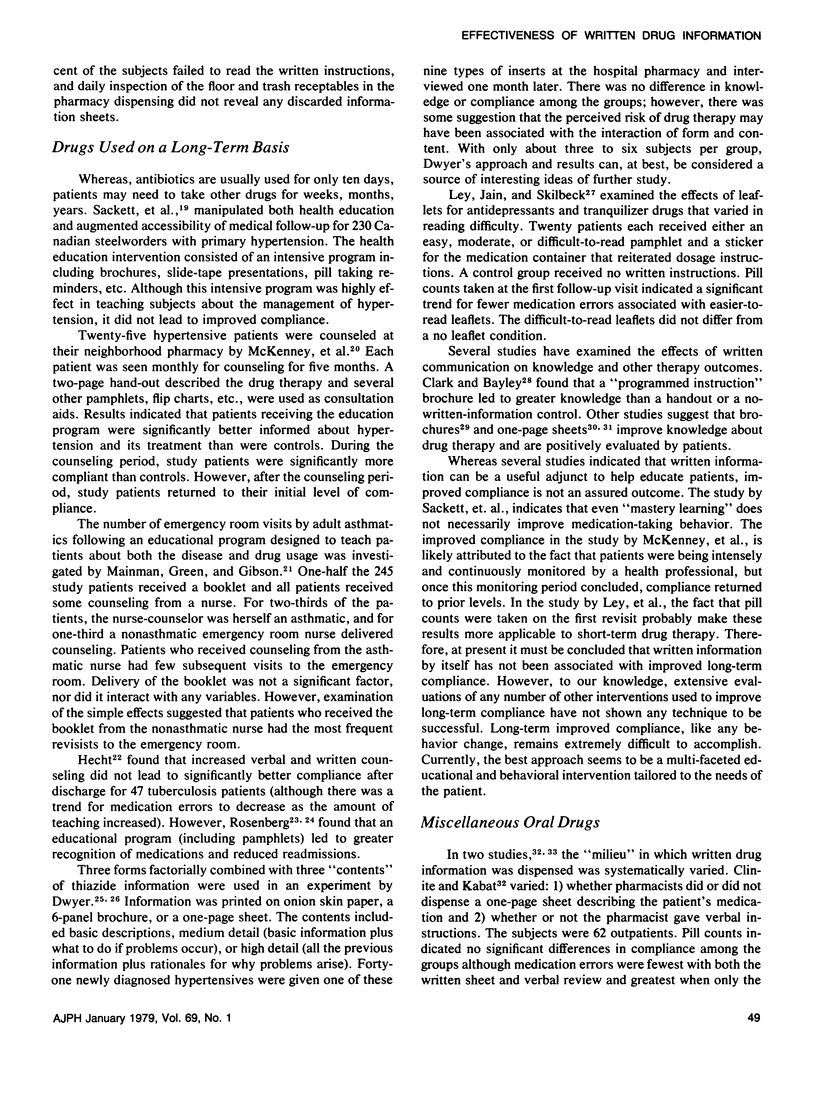
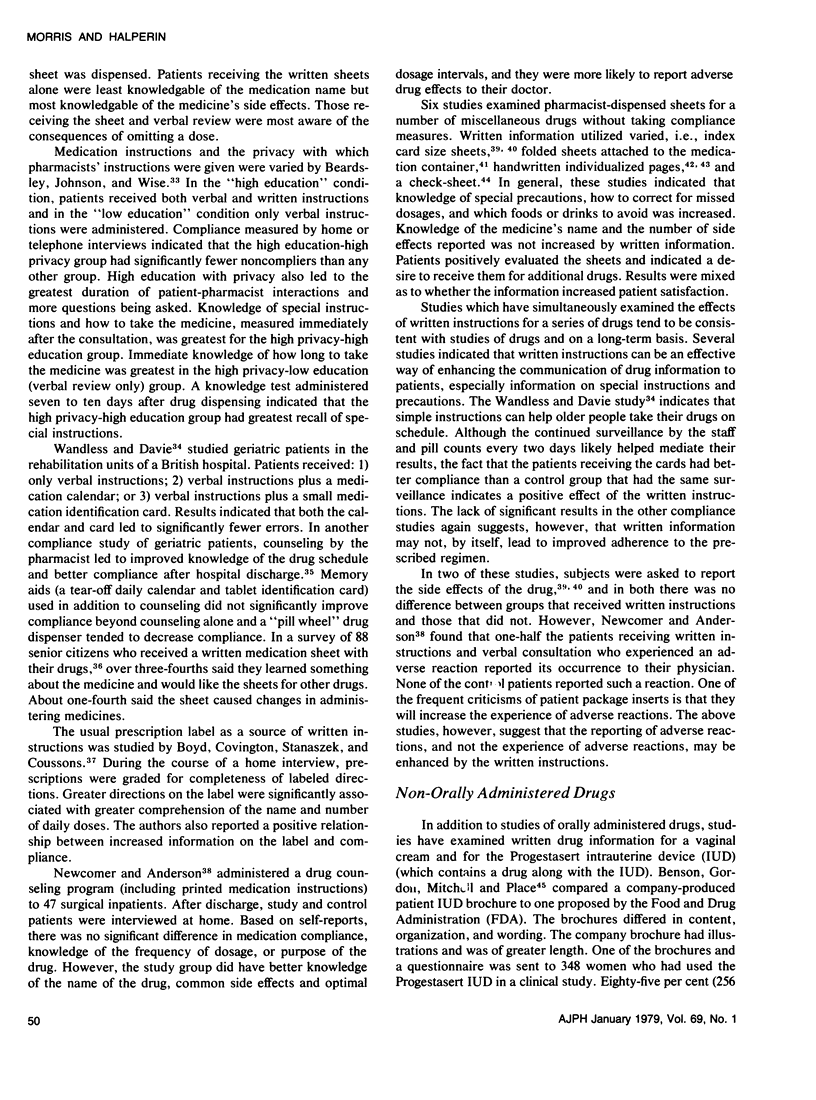
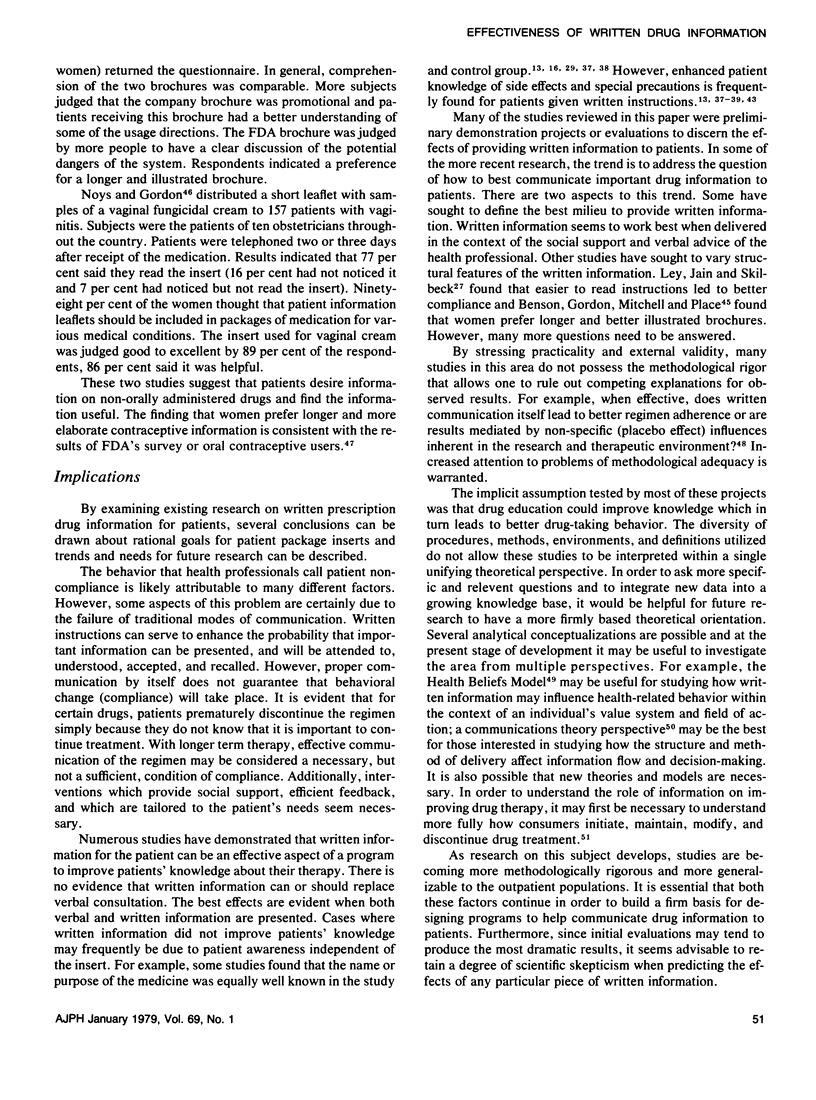
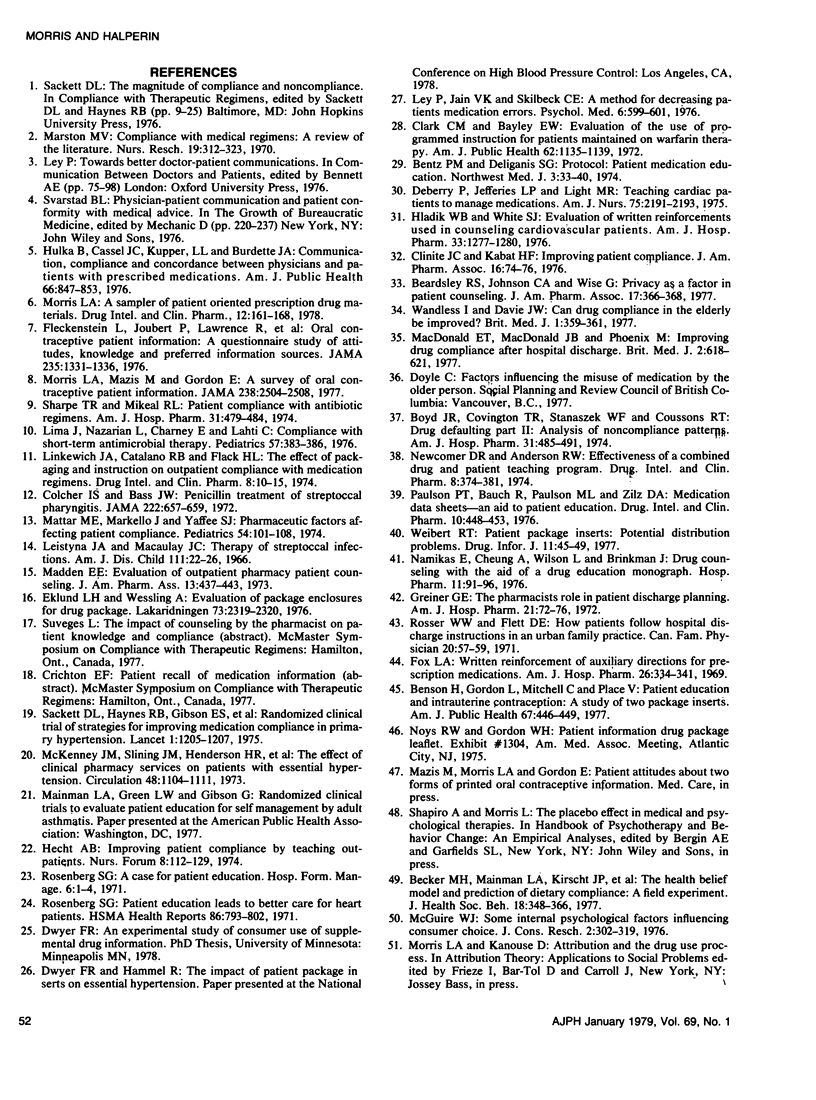
Selected References
These references are in PubMed. This may not be the complete list of references from this article.
- Beardsley R. S., Johnson C. A., Wise G. Privacy as a factor in patient ounseling. J Am Pharm Assoc. 1977 Jun;17(6):366–368. doi: 10.1016/s0003-0465(16)34218-5. [DOI] [PubMed] [Google Scholar]
- Becker M. H., Maiman L. A., Kirscht J. P., Haefner D. P., Drachman R. H. The Health Belief Model and prediction of dietary compliance: a field experiment. J Health Soc Behav. 1977 Dec;18(4):348–366. [PubMed] [Google Scholar]
- Benson H., Gordon L., Mitchell C., Place V. Patient education and intrauterine contraception: a study of two package inserts. Am J Public Health. 1977 May;67(5):446–449. doi: 10.2105/ajph.67.5.446. [DOI] [PMC free article] [PubMed] [Google Scholar]
- Boyd J. R., Covington T. R., Stanaszek W. F., Coussons R. T. Drug defaulting. II. Analysis of noncompliance patterns. Am J Hosp Pharm. 1974 May;31(5):485–491. [PubMed] [Google Scholar]
- Clark C. M., Bayley E. W. Evaluation of the use of programmed instruction for patients maintained on Warfarin therapy. Am J Public Health. 1972 Aug;62(8):1135–1139. doi: 10.2105/ajph.62.8.1135. [DOI] [PMC free article] [PubMed] [Google Scholar]
- Clinite J. C., Kabat H. F. Improving patient compliance. J Am Pharm Assoc. 1976 Feb;16(2):74-6, 85. [PubMed] [Google Scholar]
- Colcher I. S., Bass J. W. Penicillin treatment of streptococcal pharyngitis. A comparison of schedules and the role of specific counseling. JAMA. 1972 Nov 6;222(6):657–659. [PubMed] [Google Scholar]
- Deberry P., Jefferies L. P., Light M. R. Teaching cardiac patients to manage medications. Am J Nurs. 1975 Dec;75(12):2191–2193. [PubMed] [Google Scholar]
- Fleckenstein L., Joubert P., Lawrence R., Patsner B., Mazzullo J. M., Lasagna L. Oral contraceptive patient information. A questionnaire study of attitudes, knowledge, and preferred information sources. JAMA. 1976 Mar 29;235(13):1331–1336. doi: 10.1001/jama.235.13.1331. [DOI] [PubMed] [Google Scholar]
- Fox L. A. Written reinforcement of auxiliary directions for prescription medications. Am J Hosp Pharm. 1969 Jun;26(6):334–341. [PubMed] [Google Scholar]
- Greiner G. E. The pharmacist's role in patient discharge planning. Am J Hosp Pharm. 1972 Jan;29(1):72–76. [PubMed] [Google Scholar]
- Hecht A. B. Improving medication compliance by teaching outpatients. Nurs Forum. 1974;13(2):112–129. doi: 10.1111/j.1744-6198.1974.tb00558.x. [DOI] [PubMed] [Google Scholar]
- Hladik W. B., White S. J. Evaluation of written reinforcements used in counseling cardiovascular patients. Am J Hosp Pharm. 1976 Dec;33(12):1277–1280. [PubMed] [Google Scholar]
- Hulka B. S., Cassel J. C., Kupper L. L., Burdette J. A. Communication, compliance, and concordance between physicians and patients with prescribed medications. Am J Public Health. 1976 Sep;66(9):847–853. doi: 10.2105/ajph.66.9.847. [DOI] [PMC free article] [PubMed] [Google Scholar]
- Leistyna J. A., Macaulay J. C. Therapy of streptococcal infections. Do pediatric patients receive prescribed oral medication? Am J Dis Child. 1966 Jan;111(1):22–26. doi: 10.1001/archpedi.1966.02090040058003. [DOI] [PubMed] [Google Scholar]
- Ley P., Jain V. K., Skilbeck C. E. A method for decreasing patients' medication errors. Psychol Med. 1976 Nov;6(4):599–601. doi: 10.1017/s0033291700018237. [DOI] [PubMed] [Google Scholar]
- Lima J., Nazarian L., Charney E., Lahti C. Compliance with short-term antimicrobial therapy: some techniques that help. Pediatrics. 1976 Mar;57(3):383–386. [PubMed] [Google Scholar]
- MacDonald E. T., MacDonald J. B., Phoenix M. Improving drug compliance after hospital discharge. Br Med J. 1977 Sep 3;2(6087):618–621. doi: 10.1136/bmj.2.6087.618. [DOI] [PMC free article] [PubMed] [Google Scholar]
- Madden E. E., Jr Evaluation of outpatient pharmacy patient counseling. J Am Pharm Assoc. 1973 Aug;13(8):437–443. [PubMed] [Google Scholar]
- Marston M. V. Compliance with medical regimens: a review of the literature. Nurs Res. 1970 Jul-Aug;19(4):312–323. [PubMed] [Google Scholar]
- McKenney J. M., Slining J. M., Henderson H. R., Devins D., Barr M. The effect of clinical pharmacy services on patients with essential hypertension. Circulation. 1973 Nov;48(5):1104–1111. doi: 10.1161/01.cir.48.5.1104. [DOI] [PubMed] [Google Scholar]
- Morris L. A. A sampler of printed patient oriented prescription drug materials. Drug Intell Clin Pharm. 1978 Mar;12(3):161, 163-8. doi: 10.1177/106002807801200304. [DOI] [PubMed] [Google Scholar]
- Morris L. A., Mazis M., Gordon E. A survey of the effects of oral contraceptive patient information. JAMA. 1977 Dec 5;238(23):2504–2508. [PubMed] [Google Scholar]
- Namikas E., Cheung A., Wilson L., Brinkman J. Drug counselling with the aid of a drug education monograph. Hosp Pharm. 1976 Mar;11(3):91-2, 95-6. [PubMed] [Google Scholar]
- Paulson P. T., Bauch R., Paulson M. L., Zilz D. A. Medication data sheets--an aid to patient education. Drug Intell Clin Pharm. 1976 Aug;10(8):448–453. doi: 10.1177/106002807601000804. [DOI] [PubMed] [Google Scholar]
- Rosenberg S. G. Patient education leads to better care for heart patients. HSMHA Health Rep. 1971 Sep;86(9):793–802. [PMC free article] [PubMed] [Google Scholar]
- Sackett D. L., Haynes R. B., Gibson E. S., Hackett B. C., Taylor D. W., Roberts R. S., Johnson A. L. Randomised clinical trial of strategies for improving medication compliance in primary hypertension. Lancet. 1975 May 31;1(7918):1205–1207. doi: 10.1016/s0140-6736(75)92192-3. [DOI] [PubMed] [Google Scholar]
- Sharpe T. R., Mikeal R. L. Patient compliance with antibiotic regimens. Am J Hosp Pharm. 1974 May;31(5):479–484. [PubMed] [Google Scholar]
- Wandless I., Davie J. W. Can drug compliance in the elderly be improved? Br Med J. 1977 Feb 5;1(6057):359–361. doi: 10.1136/bmj.1.6057.359. [DOI] [PMC free article] [PubMed] [Google Scholar]


